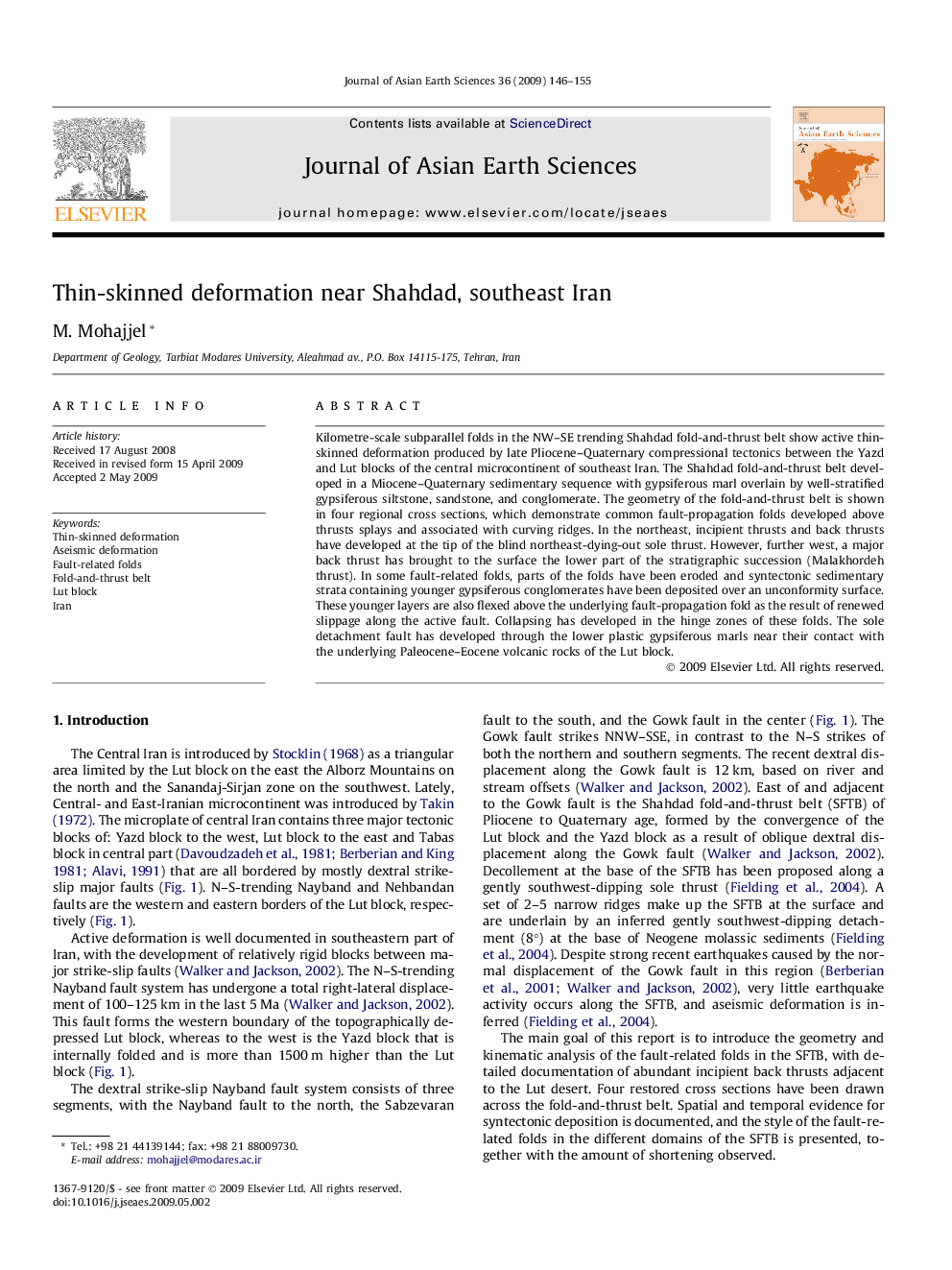| Article ID | Journal | Published Year | Pages | File Type |
|---|---|---|---|---|
| 4732480 | Journal of Asian Earth Sciences | 2009 | 10 Pages |
Kilometre-scale subparallel folds in the NW–SE trending Shahdad fold-and-thrust belt show active thin-skinned deformation produced by late Pliocene–Quaternary compressional tectonics between the Yazd and Lut blocks of the central microcontinent of southeast Iran. The Shahdad fold-and-thrust belt developed in a Miocene–Quaternary sedimentary sequence with gypsiferous marl overlain by well-stratified gypsiferous siltstone, sandstone, and conglomerate. The geometry of the fold-and-thrust belt is shown in four regional cross sections, which demonstrate common fault-propagation folds developed above thrusts splays and associated with curving ridges. In the northeast, incipient thrusts and back thrusts have developed at the tip of the blind northeast-dying-out sole thrust. However, further west, a major back thrust has brought to the surface the lower part of the stratigraphic succession (Malakhordeh thrust). In some fault-related folds, parts of the folds have been eroded and syntectonic sedimentary strata containing younger gypsiferous conglomerates have been deposited over an unconformity surface. These younger layers are also flexed above the underlying fault-propagation fold as the result of renewed slippage along the active fault. Collapsing has developed in the hinge zones of these folds. The sole detachment fault has developed through the lower plastic gypsiferous marls near their contact with the underlying Paleocene–Eocene volcanic rocks of the Lut block.
